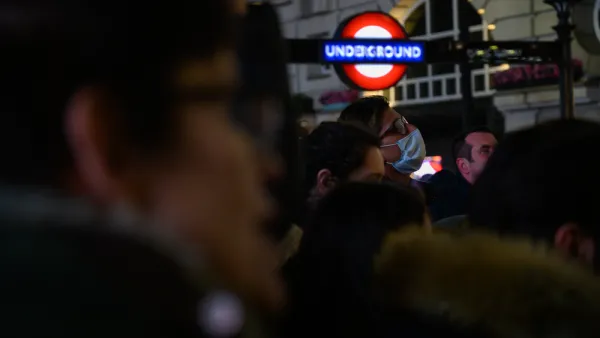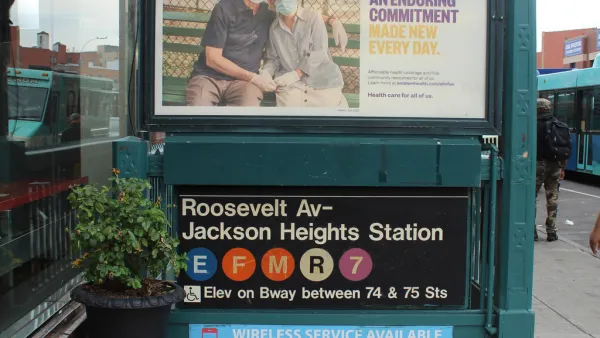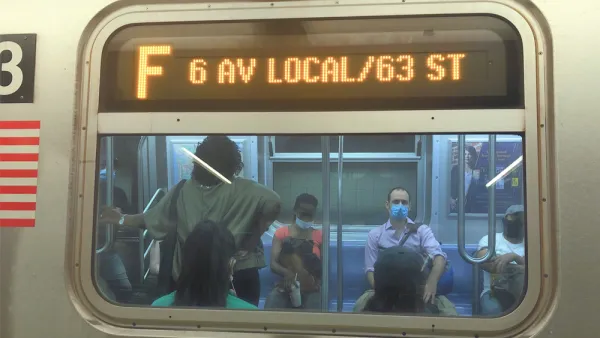Almost all heavy rail transit stations lost riders in 2020, but some stations lost far fewer riders than others. The data reveals lessons for transit planning beyond the end of the pandemic (whenever that happens).

Yonah Freemark shares the results of new analysis about how the pandemic has altered ridership patterns on U.S. heavy rail transit systems (i.e., the subway and el trains found in some U.S. cities—New York, Chicago, and Washington, D.C., and the San Francisco Bay Area in this study).
Here's how Freemark summarizes the findings of this analysis:
Though almost every station I studied saw fewer riders in 2020 compared with 2019, changes varied tremendously based on local characteristics, as neighborhoods with large Black populations, many households with low incomes, and more residents with lower levels of education lost fewer riders than other communities. Stations in employment-dense areas also lost considerably more riders than those in residential zones—likely because white collar workers with employment in downtowns were disproportionately able to work from home.
The source article linked below provides a lot more detail on each of the major findings. Freemark suggests that the ridership data should inform service choices by transit agencies that cater to the core riders that continued riding throughout the pandemic.

National Parks Layoffs Will Cause Communities to Lose Billions
Thousands of essential park workers were laid off this week, just before the busy spring break season.

Retro-silient?: America’s First “Eco-burb,” The Woodlands Turns 50
A master-planned community north of Houston offers lessons on green infrastructure and resilient design, but falls short of its founder’s lofty affordability and walkability goals.

Delivering for America Plan Will Downgrade Mail Service in at Least 49.5 Percent of Zip Codes
Republican and Democrat lawmakers criticize the plan for its disproportionate negative impact on rural communities.

Test News Post 1
This is a summary

Test News Headline 46
Test for the image on the front page.

Balancing Bombs and Butterflies: How the National Guard Protects a Rare Species
The National Guard at Fort Indiantown Gap uses GIS technology and land management strategies to balance military training with conservation efforts, ensuring the survival of the rare eastern regal fritillary butterfly.
Urban Design for Planners 1: Software Tools
This six-course series explores essential urban design concepts using open source software and equips planners with the tools they need to participate fully in the urban design process.
Planning for Universal Design
Learn the tools for implementing Universal Design in planning regulations.
EMC Planning Group, Inc.
Planetizen
Planetizen
Mpact (formerly Rail~Volution)
Great Falls Development Authority, Inc.
HUDs Office of Policy Development and Research
NYU Wagner Graduate School of Public Service





























